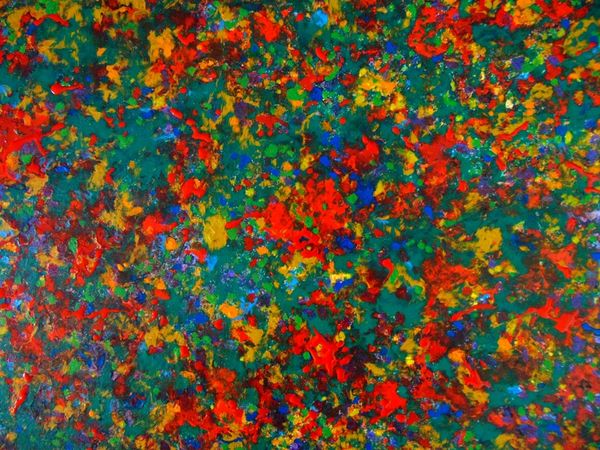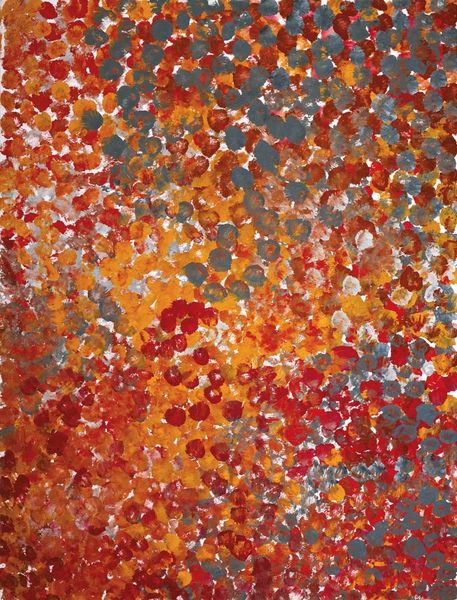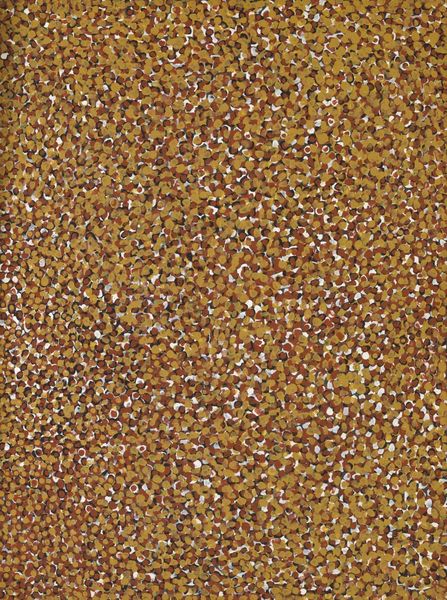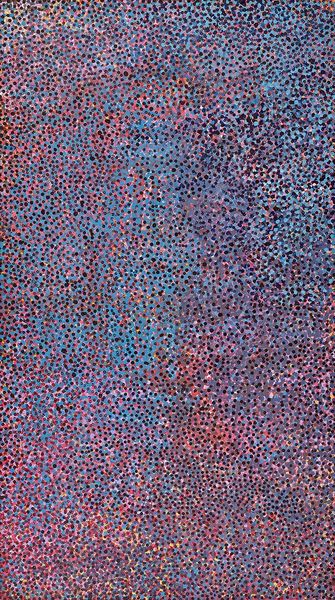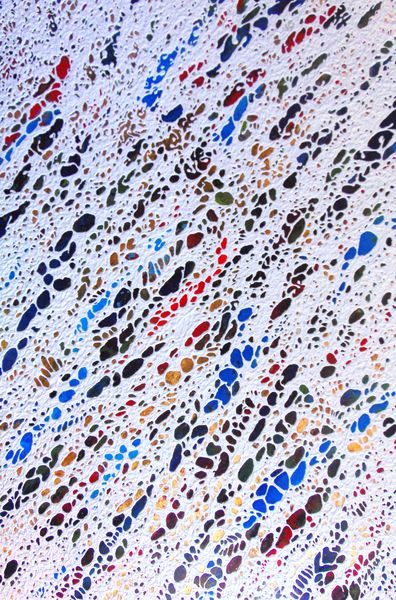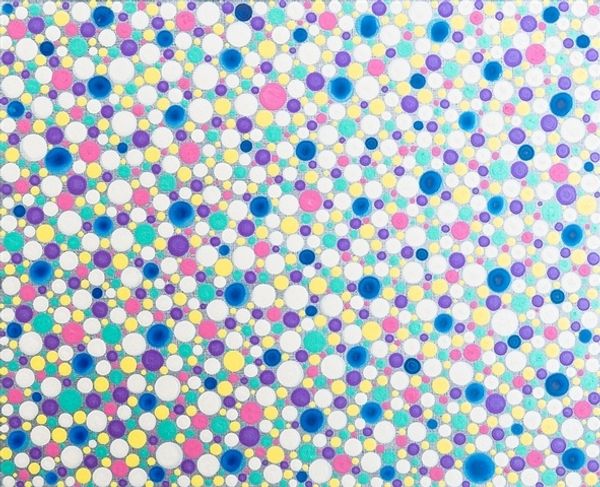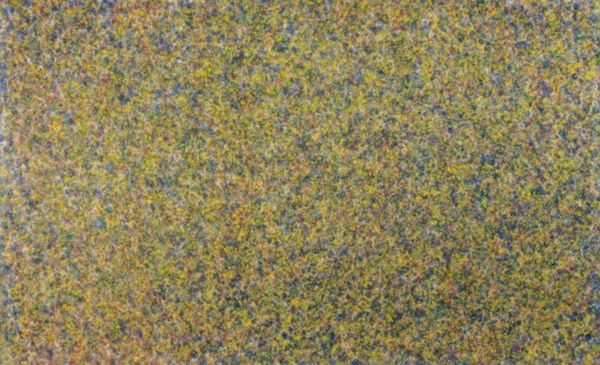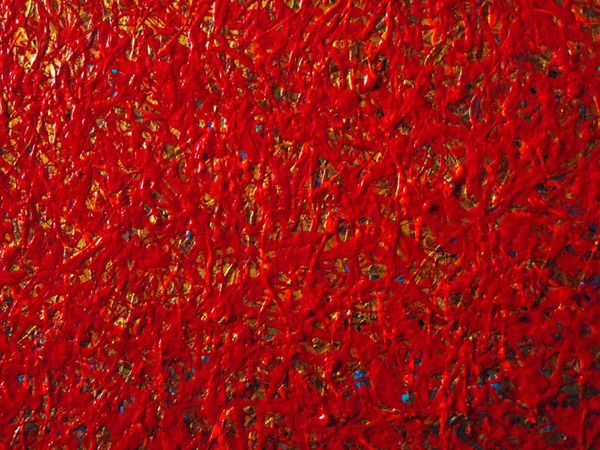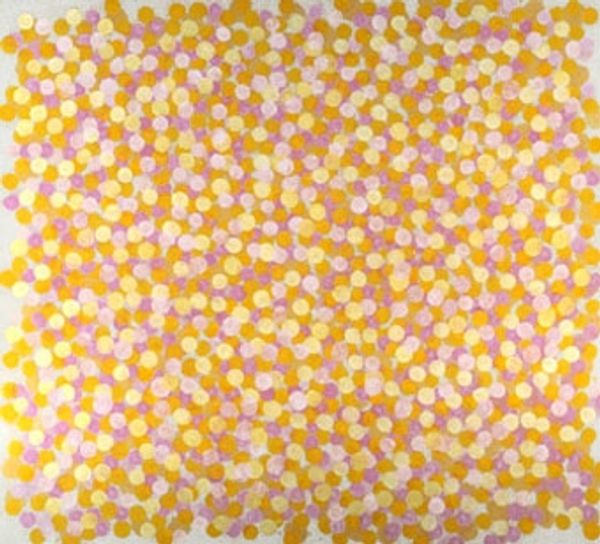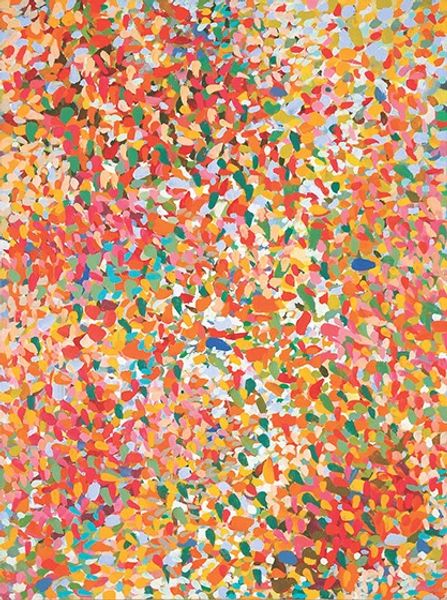
painting, acrylic-paint
#
natural stone pattern
#
naturalistic pattern
#
organic
#
painting
#
pattern
#
acrylic-paint
#
geometric pattern
#
abstract pattern
#
organic pattern
#
repetition of pattern
#
vertical pattern
#
abstraction
#
pattern repetition
#
layered pattern
Copyright: Emily Kame Kngwarreye,Fair Use
Editor: Here we have Emily Kame Kngwarreye’s "Yam Seed," painted in 1989 with acrylics. It’s a field of dots, so vibrant and alive – almost like a shimmering surface. How would you approach interpreting this work? Curator: Well, considering it solely through its formal elements, notice the all-over composition. There's no traditional foreground or background, and the eye isn't led to a central focal point. The repeated application of pigment generates an optical vibration across the canvas. Editor: So the lack of a clear focal point is a deliberate choice? Curator: Precisely. The visual field is unified by color and texture; note the rhythmic pattern of turquoise, red and yellow dots. It engenders visual stimulation through repetition, creating movement from what appears to be stasis. This dynamism is achieved, would you agree, through color juxtaposition and textural density? Editor: Absolutely. The dots are not uniformly applied, adding another layer of visual complexity. How does the title “Yam Seed” inform your formal reading? Curator: Intriguingly, yes. While it evokes organic forms, the work itself is almost resolutely abstract. It exists, and in being is both representational and self-referential. Does its composition, a myriad of seemingly disparate marks combining into a unified whole, itself become a commentary on interconnectedness? Editor: That’s fascinating. I was initially drawn to the visual impact, but seeing how these elements contribute to the work's totality deepens my appreciation. Thank you. Curator: My pleasure. Considering the piece solely on its visual properties provides another perspective, allowing us to explore these dynamic relations outside external contexts, creating deeper, more engaging and challenging dialogue with the work.
Comments
No comments
Be the first to comment and join the conversation on the ultimate creative platform.
